| The Thief: A special look | Thieves Guilds | Climb Walls | - | - |
| The Thief (PH) | Classes | - | Dragon magazine | 1st Edition AD&D |
Leomund's
Tiny Hut
by Lenard Lakofka
The Thief: A special look
The thief
character is more often
abused by players than underrated,
though some players miss capabilities
that thieves should have. The easiest
way to discuss a thief is to look at his/her
special abilities.
How often does a thief pick
pockets? I
had a thief progress to 16th level over
a
two-year period and in that time he
picked one pocket! Picking a pocket is
best done just as an assassin plans a
killing. The two acts have a great deal
in
common. If you tell a player, “A drunk
is
approaching and bumps into you as he
passes,” or some such statement, it will
be obvious to all the players what has
likely occurred. On the other hand if
you
allow the thief to pick his/her time of
attack with some real forethought, it
will
be very difficult for the victim to realize
when his/her pocket was picked.
To encourage pickpocketing, it is very
wise to have many encounters for the
party in a town. Mention every person
the party passes on the street if the
town
is small. In a town with a thousand or
more persons there will be a number of
crowds encountered, or people will be
passed almost every round of movement.
Such situations are a thief’s bread and
butter. A good thief will not attempt
to
pick up something if he/she will stand
out. This should be obvious from the victim’s
point of view as well. Allow more
experienced thieves, that player characters
might run into, to convey this concept (for a price) if your players have
not
already caught on to it.
Thieves also enjoy slipping in and out
of camps to pick up things. A sleeping
victim can add as much as 100% to a
thief’s chance of stealing something.
A
good thief will try to sneak past an outpost/lookout
and get into the sleeping
/drunken camp. A good thief will rarely
kill the guard unless he/she has to.
One of the most important functions of
a thief
is not even mentioned in the Players Handbook. That function is
mapping! The ability to sneak into a place
and get the “lay of the land” is very
important to any party. It is most valuable
when a building is the subject of the
party’s eventual attack. However, the
DM
should be sure that a thief takes the
opportunity to draw a map promptly. If the
thief must do it from memory after the
investigation, the map will likely be
inaccurate. Also, the DM must require some
reasonable Intelligence on the part of
the thief to make a good map. Stupid
thieves (Intelligence 7 or less) might
not
even know how to read, much less write
or draw accurately.
On the Intelligence
table (PH, page 10)
we can see that those of Intelligence
7 or
less can learn only one language over
and above their minimum number. Intelligence
can be used — for all characters
—to determine the chance to be able to
read and write any and all languages
known. Multiply Intelligence by 12 to
yield a percent chance that a character
of any class will know how to read and
write. Optionally, Wisdom may be added
to this chance (cumulative) but at a lower
rate; 3% per point of Wisdom. This
method ensures that most characters
can read and write, ‘but not all.
Thieves, or any other characters for
that matter, who fail to map as they go,
or
at least to pause during the investigation
to map from time to time, should be
forced to draw a map later from memory.
If a single player is making the map,
for
game purposes, allow no one else who is
present to make a map. This is especially
important if any player has no character
on the mapping expedition. A good party
will rarely send the thief on a mapping
foray alone. They will send along one
or
two back-up characters who can help if
things go wrong.
Opening
locks, as we all know, is a
matter of “cleverness, plus knowledge
and study of such items” (PH, page
27).
Again, stupid thieves could be penalized,
but likely that would be going too
far and players would rebel. However,
real Intelligence does come into play
on
puzzle locks and complex closures. Nothing
forbids the inclusion of “complex
locks” in addition to the run-of-the-mill,
crude lock the thief will run into most
of
the time. “Complex locks” can subtract
some set amount from the thief’s percent
chance to open the lock, cutting his
chance by a third, half, two thirds or
even
more for truly unusual, challenging closures.
Such complex locks should be
expensive and rare. Picking a complex
lock (or an ordinary one) in stress situations
(practice does not count) can give
a thief actual experience, if the DM
chooses to award experience for such an
act. An ordinary lock takes 1-4 rounds
to
open; a complex one can take 1-10
rounds (as suggested in the DMG,
page
19) or perhaps even longer for unique
ones.
Finding
and removing traps are two
separate acts. It is best for the DM not
to
go into detail on what kind of trap is
found, because that might tip off the
way
to disarm the trap. Some traps can be
obviously disarmed and thus the second
act (removing) does not come into play.
The DM is wise to say something like:
“You find no traps,” or “You think you
disarmed it,” as opposed to “There are
no traps,” or “You have disarmed it.”
Only if the character is absolutely sure
(100% chance) should a definite announcement
be made.
A new ability in this category is given
below — Setting
Traps:
| Level of thief | Chance to set trap |
| 1 | 26 |
| 2 | 32 |
| 3 | 38 |
| 4 | 43 |
| 5 | 48 |
| 6 | 53 |
| 7 | 57 |
| 8 | 61 |
| 9 | 65 |
| 10 | 68 |
| 11 | 71 |
| 12 | 74 |
| 13 | 76 |
| 14 | 78 |
| 15+ | 80 |
Adjustments for Dexterity:
| 9 | -10 |
| 10 | -6 |
| 11 | -2 |
| 12 | +2 |
| 13 | +5 |
| 14 | +8 |
| 15 | +11 |
| 16 | +14 |
| 17 | +17 |
| 18 | +20 |
Adjusments for race:
| Dwarf | +15 |
| Elf | -5 |
| Gnome | +10 |
| Half-elf | 0 |
| Halfling | +8 |
| Half-orc | +4 |
The best possible chance to set a trap
is 99.9%. Let 1000 convert to 99.1%,
101% to 99.2%,.......108% to 99.9%. Failure
to set a trap successfully will cause
the trap to spring on the setting thief.
His/her chance to escape from his/her
own trap can be a function of Dexterity
for mechanical traps, at a chance of 3%
per point of Dexterity. If the thief does
not jump free, he/she will suffer
the full
consequences of the trap.
Moving
silently is only abused when
the DM forgets that the rate of movement
is only twelve feet a round (DMG,
page
19). If the thief moves faster, reduce
the
chance of silence by as much as 3% per
foot of movement above twelve feet per
round. The actual surface being crossed
wilt dictate the proper subtraction (ranging
from ½% to 3% per foot). It should
also be noted that the thief using a SiIence
15’ Radius spell will have that
sphere of silence hit his/her victim while
the thief is stilt 15 feet away; a sudden
lapse into silence will often alert a
victim.
Circumstances must be considered in
such a case. It should also be remembered
that Boots of Elvenkind do assume
some slow rate of movement — not
twelve feet a round, but not running either
— in order to function properly. A
speed of up to half of the thief’s normal
walking speed would allow the boots to
function as designed. A higher speed
would begin to negate their effectiveness.
Hiding
in shadows has been discussed
numerous times. Shadows must be fairly
deep to be effective. Do not forget that
a
figure hiding in shadows can still be
detected by smelt, a Wand of Enemy Detec
tion, Detect Magic (if he/she has a magic
item(s)), etc.
The chance to hear
noises assumes
that the area is quiet. If the party is
talking or moving about, this action will negate the chance. Hearing a
sound can
also involve discerning what is heard
—
but this ability does take thief’s training.
Reroll (at the same chance as to hear
a
noise) to see if the sound was discerned
as to what a likely source or cause might
have been. Discerning a noise might not
only mean hearing bits of actual conversation,
but might also allow a guess as to
how many persons are engaged in speaking.
The DM should not give away too
much!
Obviously, non-thieves can hear things,
but the ability of discernment should
not
be allowed to them. Give other characters
half of a thief’s chance (by level) to
hear noises, but avoid a procession of
one character after the other going to
the
door to listen! Such a procession might
be heard from the other side. Note that
Undead rarely make noise.
Climbing
walls can be aided by spikes
driven in with a hammer. But this makes
“Thor‘s own good sound” and can be
heard for miles in some tunnel complexes.
Such driving of one spike will
take 3-18 segments, longer for very hard
rock. Thieves who try to cast darts, throw
daggers, and perform similar acts while
clinging to a wall by their toes should
fall
flat on their behinds! A player will claim
great things are possible while hanging
on a wall, not the least of which will
be
disarming traps, melee, drawing a map
and other absolutely absurd things. Give.
this turkey a chance to hold on equal
to
2% per point of dexterity on difficult
acts
— but any act the DM considers impossible
will cause him/her to fall, period.
Falling can deal out quite a bit of damage,
not the least of which will be to carried items which will suffer ordinary
or
crushing blows as our hero hits the floor
below.
Back
stabbing can be partially negated.
It does not have to be an all-or-nothing
affair. Only total surprise will
give the full bonus to damage. This bonus
is due to the thief's skill at placing
the blow exactly where he/she wants it.
This can only be done on a surprised
victim. A figure who catches sight of
the
thief, even if that sight is subsequently
lost, will be on guard and might be hard
to sneak up on. This cannot be quanitified
but must be determined on a
situation-by-situation basis. For example:
A figure is running away from a party
at full speed. A thief takes off after
him
and tries to hit from behind. The figure
is
not really surprised, but the fleeing
figure
is also not looking behind him/herself
at every step. Thus, a bonus of +3 to
hit (instead of +2 or +4) and perhaps
double damage if a hit occurs (instead
of
triple damage) would be quite fair.
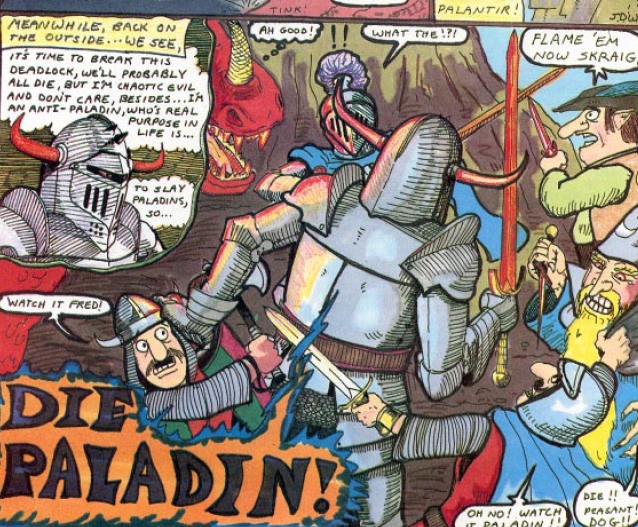
Housebreaker harness or spider
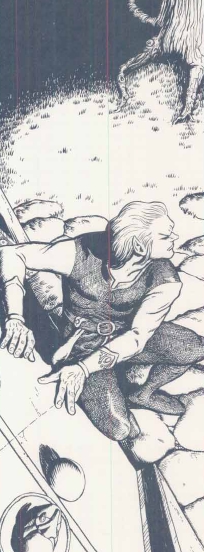
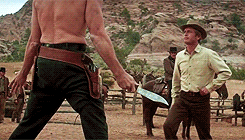
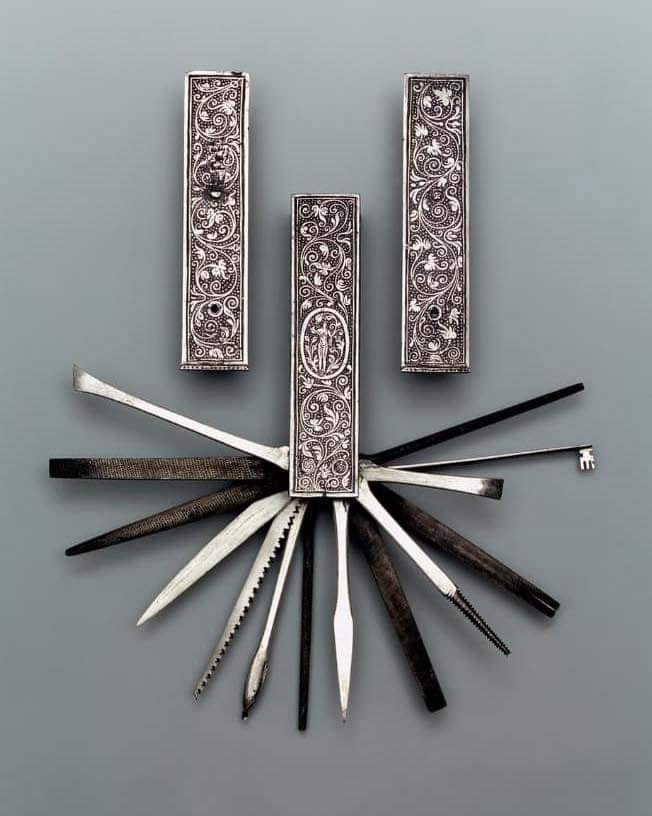
-
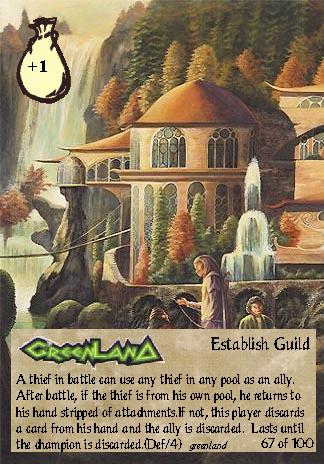
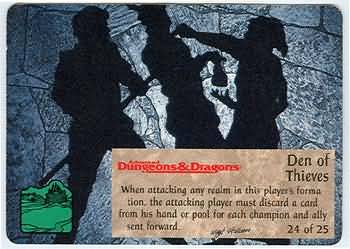
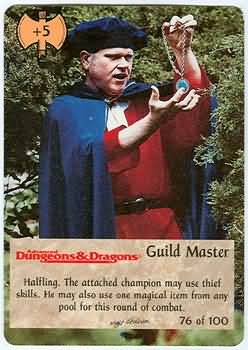
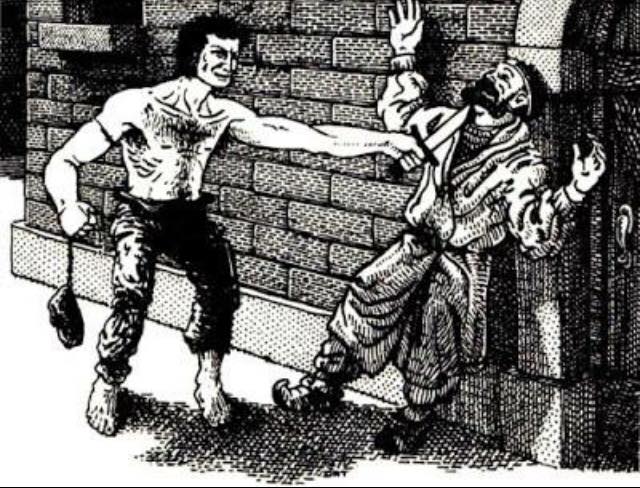

Tools of the (Thieving)
Trade:
A look at a thief's
best friends
by Vince Garcia
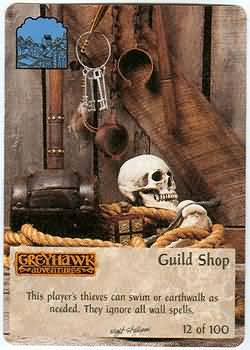
<Observe the creation of any 1st-level
thief.
Without exception, one sees 30 gp going
towards the immediate purchase of thieves' tools.
Picking Pockets
If the victim is moving and the thief
must also move to keep pace with his target,
the chance of success on either roll is
half as great as normal,
rounded up to the nearest 5% (15% for
a 1st-level human thief with 15 dexterity,
5% for the same thief at 13th level, etc.).
Opening Locks
This set of equipment is priced at 30
gp.
[magnifying lens]
If at least part of the lock's mechanism
is exposed to view and illumination is sufficient for the thief to see
what he is doing,
the use of a magnifying lens adds 5% to
the thief's chance of success (up to a maximum of 99%).
Using this magnifying lens to find traps
adds a 5% bonus to this ability as well.
[metal-eating acid]
Pouring this liquid inside the lock machanism
gives a thief a chance of opening the lock in 3-12 turns (this amount of
time must be allowed in the event of either success or failure).
This chance is expressed as a function
of an item's ability to save vs. acid,
as illustrated on page 80 of the Dungeon
Master's Guide (use the "metal, hard" category when referencing this
table).
Any attempt to use this method (or the
filing method described hereafter) on the internal mechanisms of a door
lock causes a 40% chance per attempt of damaging the lock,
and thereby making the door unopenable
except by removing the door or its internal mechanism (a difficult task,
requiring great effort and time).
Finding/Removing Traps
If he attempts to remove a trap with his
bare hands when it would be more prudent to use tools,
his chance of success is half as great
as normal (rounded up to the nearest 5%).
Moving Silently
If a thief is wearing hard-soled boots
or any other footgear that might make noise when impacting with a hard
surface,
his chance of being able to move silently
is half the normal chance of success (rounded up to the nearest 5%).
A thief can offset this disadvantage by
choosing to move at half speed (6' per round instead of 12'),
in which case his chance of success is
the normal amount.
[leather straps]
To minimize this problem,
the thief may decide to carry a pair of
3' leather straps;
the placement of these straps distributes
the thief's weight over a larger area,
thus preventing the annoying creaks.
Hiding in Shadows
[Utility suit]
This outfit provides an additional 5%
to a thief's ability to hide in shadows,
with a maximum chance of 99%.
[Charcoal/soot]
Using soot or charcoal lends a thief an
additional 2% to the ability to hide in shadows,
with a cumulative maximum chance of (when
a utility suit is worn as well) of 99%.
Hear Noise
[Hearing cone]
Using such a device gives a thief a bonus
of 5% to his ability to hear noises.
Climbing Walls
For climbing purposes,
a thief's kit might include a small hook
secured to a 20' length of fine line (possibly braided horsehair).
This climbing aid can bear the weight
of an unarmored thief (200 lbs., or 2,000 gp weight) and an additional
250 gp of encumbrance.
[Miniature lantern]
For a price,
a thief may also invest in a miniature
shuttered lantern which casts a tight beam for a distance of 15',
keeping ambient light to a minimum.
[Drills and chisels]
Removing a lock in this manner takes from
1-4 turns and spring any concealed traps that have not been removed from
the lock prior to this activity.
It pays to know what you're getting for your 30 gp.
>
| Item | Cost | Encumbrance |
| Belt pouch (to store picks) | 1 gp | 10 gp |
| Sharpened silver coin | 1 sp | 1 gp |
| Picks and wires | 30 gp | 0 |
| Magnifying lens | 7 gp | 1 gp |
| Metal-eating acid | 100 gp | 10 gp |
| File | 5 gp | 5 gp |
| Leather straps | 10 sp | 50 gp |
| Boots, high, soft | 1 gp | 30 gp |
| Boots, low, soft | 8 sp | 30 gp |
| Utility suit | 5 gp | 25 gp |
| Charcoal/soot | 1 cp/free | 5 gp |
| Hearing cone | 5 gp | 5 gp |
| Climbing hook and line | 10 gp | 50 gp |
| 10 spikes and hammer | 2 gp | 60 gp |
| Tiger claws, pair | 30 sp | 5 gp |
| Candle | 1 sp | 5 gp |
| Tinderbox | 1 gp | 2 gp |
| Miniature lantern | 20 gp | 30 gp |
| Knife and sheath | 1 gp | 1 gp |
| Clay/beeswax | 1 sp | 3 gp |
| Drill and chisels | 75 gp | 350 gp |
| Keymaking set | 150 gp | 250 gp |
